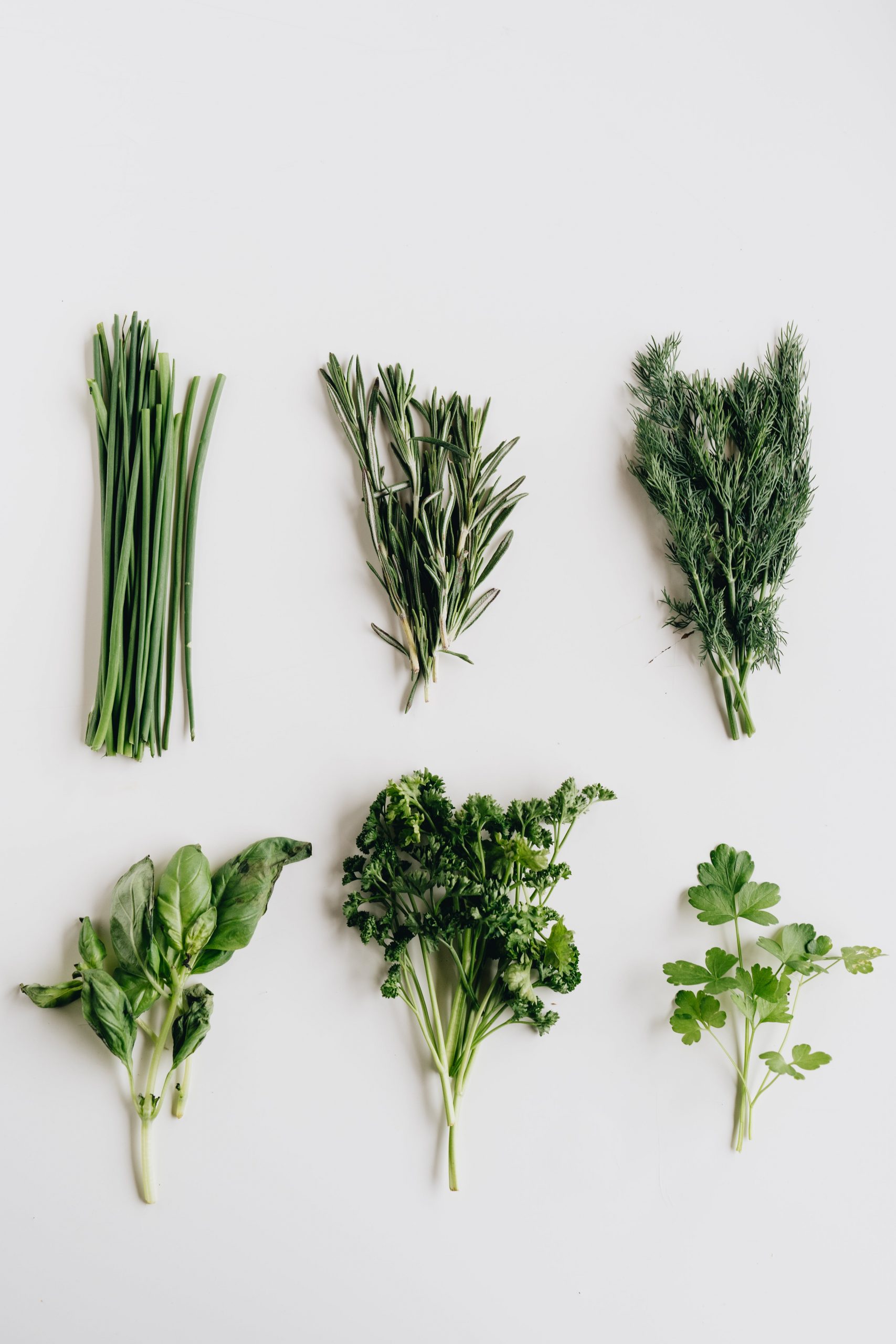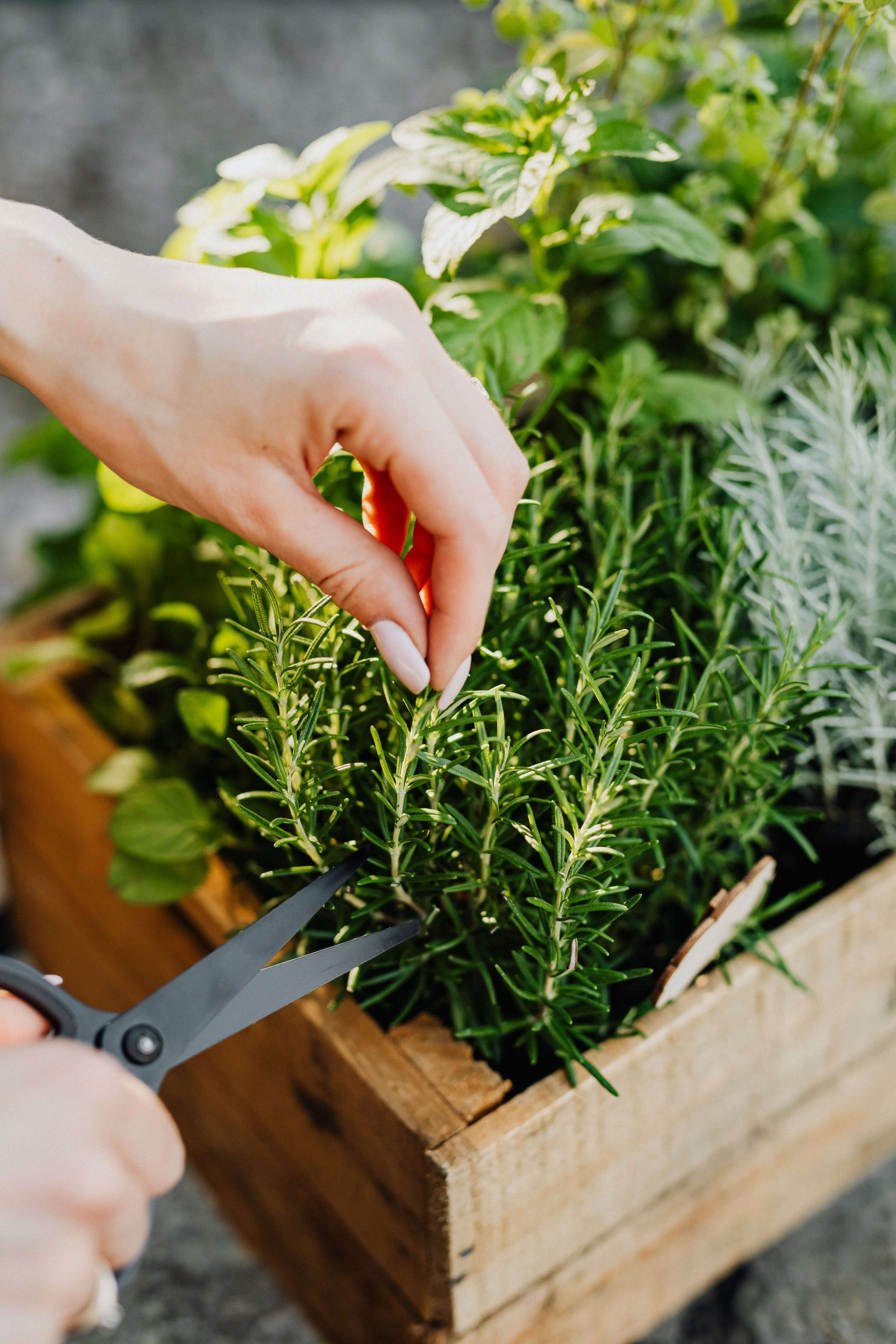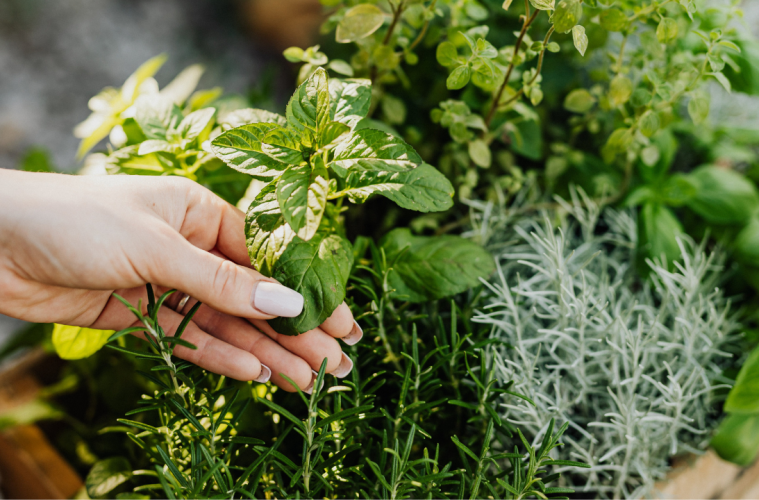In the hustle and bustle of modern life, the convenience of having fresh herbs at your fingertips can elevate your culinary experience. Imagine stepping into your kitchen and plucking a handful of vibrant basil or fragrant rosemary from your very own container garden.
Growing a kitchen garden in containers is not only practical but also adds a touch of greenery to your home. In this guide, we’ll explore the joy of cultivating a kitchen garden filled with your favourite herbs
Choosing the right containers
Before you embark on your herbal adventure, select containers that provide ample space for your herbs to flourish. Opt for containers with good drainage to prevent waterlogged soil, promoting healthy root development. Terracotta pots, wooden boxes, or hanging baskets are all excellent choices, adding a touch of aesthetic appeal to your kitchen space.
Selecting the ideal herbs
Consider the herbs you frequently use in your cooking and choose varieties that thrive in containers. Basil, mint, thyme, rosemary, and chives are popular choices for container gardens. Not only do these herbs pack a flavour punch, but they also adapt well to the confined space of containers. Ensure that your chosen herbs have similar sunlight and water requirements for harmonious growth.

Pexels
Potting mix and fertilisation
Use a high-quality potting mix that provides good aeration and drainage. A mixture of peat moss, perlite, and vermiculite is an excellent choice for container gardening. Additionally, incorporate a slow-release fertiliser into the soil to provide a steady supply of nutrients throughout the growing season. Regularly replenish the soil to maintain optimal conditions for your herbs.
ALSO SEE: 9 HERBS TO GROW TO KEEP PESTS AT BAY
Sunlight and placement
Most herbs thrive in full sunlight, so choose a location in your home that receives at least six hours of sunlight each day. If natural light is limited, consider supplementing with artificial grow lights. Place your containers strategically, ensuring easy access for harvesting and providing adequate air circulation to prevent diseases.
Watering
Container gardens require vigilant watering, as pots tend to dry out faster than garden beds. Water your herbs when the top inch of the soil feels dry to the touch. Be mindful not to overwater, as this can lead to root rot. A drip tray under your containers will catch excess water, preventing water damage to your kitchen surfaces.

Pexels
Harvesting and pruning
The key to a thriving container garden lies in regular harvesting and pruning. Encourage bushier growth by regularly pinching back the tips of your herbs. Harvest leaves in the morning when essential oils are most concentrated for maximum flavour. Pruning not only keeps your herbs in check but also promotes a continuous supply of fresh growth.
With careful planning and attention, you can enjoy the convenience of having your favourite herbs within arm’s reach, transforming your everyday cooking into a culinary adventure. So, roll up your sleeves, embrace the joy of gardening, and savor the flavors of a freshly grown kitchen garden.
ALSO SEE:
Feature image: Pexels

